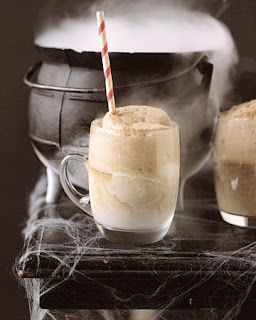"In Spanish, All Saints Day and All Souls Day are known as El Día de Todos los Santos and El Día de los Muertos, respectively. While it's strange for most of us to accept the fact that "death" and "festivities" can go hand-in-hand, for most Mexicans, the two are intricately entwined. This all stems from the ancient indigenous peoples of Mexico (Purepecha, Nahua, Totonac and Otomí) who believed that the souls of the dead return each year to visit with their living relatives - to eat, drink and be merry. Just like they did when they were living." (From eldiadelosmuertos.com)
Typically, decreased children (little angels) are remembered on Novemeber 1st with toys and colourful balloons decorating their graves while November 2nd is the day to remember adults who have passed, through honouring what they loved while alive: food, drink, music, flowers, personal belongings or favorite activities. For example, it is not uncommon for families to celebrate with their deceased members through a large meal and Mariachi, if that is what the guest of honour loved to do! To some, this must seem a bit morbid, but from the Mexican culture it is natural - they believe in the life-death-rebirth continuum.
Around parts of Mexico you can find strange (to North Americans) artwork with skeletons in fancy dresses and top hats or traditional Mexican dress. This is a modern take on an Aztec god known as "Lady of the Dead" and referred to as Catrina. Catrina's are now modelled in both men (Catrin) and women representing the souls that have past that are dear to us. It is a lovely recognition of those who have marked a persons life and ancestors from which you came. My husband and I first saw a Catrina from the extensive collection of Ernesto Coppel Kelly, owner of the Pueblo Bonito chain. We even purchased our own festive Catrin and Catrina while on our honeymoon in Talquepaque, a beautiful artisan community close to Guadalajara.
Besides the Catrinas, ther are several items and traditions associated with El Dia de los Muertos, including the flower of choice, zempasuchil, a Mexican Marigold, and candles adorning gravesites. Others include specific food like pan de muerto (a rich coffee cake decorated with meringues made to look like bones), as well as skull candies and sweets made of marzipan.
Altars made for family members
Flowers
Candles for candle light vigils
Food to celebrate
This is a fantastic celebration which I am sad to report we have never taken part in, though I hope to return to Mexico and visit a town that celebrates this festive day in the near future. I think we can learn some wonderful ideas of family and traditions from our Mexican friends!





















































